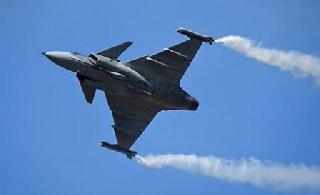
WASHINGTON (PTI): With the Iraq war ending and troops preparing to withdraw from Afghanistan, US Defense Secretary Leon Panetta has told law makers that the country was gearing up for a smaller and leaner force which would be technologically advanced.
"We knew that coming out of the wars, the military would be smaller. But to ensure an agile force, we made a conscious choice not to maintain more force structure than we could afford to properly train and equip," Panetta said at a Congressional hearing.
"We are implementing force structure reductions consistent with the new strategic guidance for a total savings of about USD 50 billion over the next five years," he said.
The new initiatives would help in reducing Pentagon's budgetary requirements, which is now a must, given the economic constraint that the country is facing.
These adjustments include, he said, gradually resizing the active army to 490,000 soldiers; gradually resizing the active Marine Corps to 182,100 Marines, and reducing and streamlining the Air Force's airlift fleet.
The Air Force will maintain a fleet of 275 strategic airlifters and 318 C-130s, a fleet more than capable of meeting the airlift requirements of the new strategy.
In addition, the Air Force will eliminate seven Tactical Air squadrons but retain a robust force of 54 combat-coded fighter squadrons, maintaining the capabilities and capacity needed to meet the new strategic guidance, he said.
The Navy, he said, will retire seven lower priority Navy cruisers that have not been upgraded with ballistic missile defense capability or that would require significant repairs, as well as two dock landing ships.
Panetta also informed lawmakers of his efforts to rebalance global posture and presence to emphasize Asia-Pacific and the Middle East.
"The strategic guidance made clear that we must protect capabilities needed to project power in Asia-Pacific and the Middle East," Panetta said.
To this end, this budget maintains the current bomber fleet; maintains the aircraft carrier fleet at a long-term level of 11 ships and 10 air wings, maintains the big-deck amphibious fleet; and restores Army and Marine Corps force structure in the Pacific after the drawdown from Iraq and as we drawdown in Afghanistan, while maintaining a strong presence in the Middle East, he said.
The budget also makes selected new investments to ensure we develop new capabilities needed to maintain our military's continued freedom of action in face of new challenges that could restrict our ability to project power in key territories and domains, he said.
Other key power projection investments in fiscal 2013 include USD 300 million to fund the next generation Air Force bomber (and a total of USD 6.3 billion over the next five years); USD 1.8 billion to develop the new Air Force tanker; and USD 18.2 billion for the procurement of 10 new warships, including two Virginia-class submarines, two Aegis-class destroyers, four Littoral Combat Ships, one Joint High Speed Vessel, and one CVN-21-class aircraft carrier.
The US is also investing USD 100 million to increase cruise missile capacity of future Virginia-class submarines, he said.
"The strategy makes clear that even though Asia-Pacific and the Middle East represent the areas of growing strategic priority, the United States will work to strengthen its key alliances, to build partnerships and to develop innovative ways such as rotational deployments to sustain US presence elsewhere in the world," Panetta said.
To that end, this budget makes key investments in NATO and other partnership programmes, including USD 200 million in 2013 and nearly USD 900 million over the next five years in the NATO Alliance Ground Surveillance system.
"The new strategy also envisions a series of organizational changes that will boost efforts to partner with other militaries.
"These include allocating a US-based brigade to the NATO Response Force and rotating US-based units to Europe for training and exercises; and increasing opportunities for Special Operations Forces to advise and assist partners in other regions," he said.
 Previous Article
Previous Article Next Article
Next Article













The Indian Air Force, in its flight trials evaluation report submitted before the Defence Ministry l..
view articleAn insight into the Medium Multi-Role Combat Aircraft competition...
view articleSky enthusiasts can now spot the International Space Station (ISS) commanded by Indian-American astr..
view article